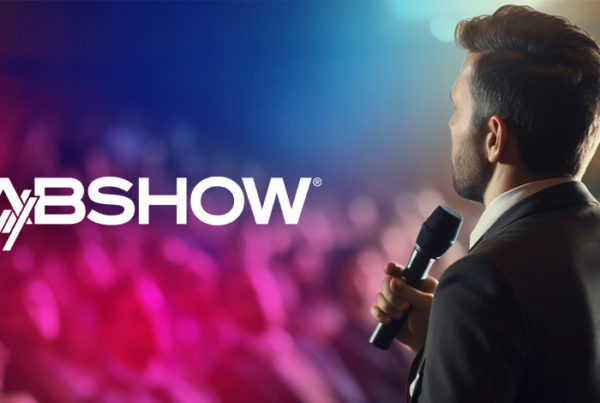As the industry looks to 2025, uncertainty remains regarding local digital advertising revenue for radio. One thing is certain — for stations to improve margins, digital will need to be a key part of selling strategies.
For a first look at predictions, we’ve spoken to partners and reviewed research to reveal what the year ahead may present.
Digital Local Revenue Will Eclipse Traditional
In BIA’s U.S. Local Advertising Forecast, they project that local digital revenue will exceed traditional, at $89 billion and $82 billion, respectively. It’s the first year where digital takes the lead but isn’t a surprise. Digital has been gaining each year. One factor in this is likely the movement of ad dollars from broadcast TV to OTT/CTV.
However, their forecast shows that of the $12.9 billion total revenue for 2025, $2.9 billion will be in the digital category, and $10 billion will fall under radio OTA. Digital growth is 3.57%, up from $2.8 billion in 2024.
While the big picture of local will skew digital, the bulk of radio revenue will still be from OTA. Its decline from 2024 to 2025, though, means digital needs to fill the gap.
A Variety of Industries Will Likely Increase Local Digital Spending with Radio
BIA’s first look at verticals offers insight into the best targets for radio digital sales. The top industries will be:
- QSRs (quick-serve restaurants): These businesses are consistent local advertisers always seeking to gain market share from competitors. The ad types they will be buying won’t only be about their menu. They’ll also still need help with recruitment, as these jobs have high turnover, and the supply of workers remains low.
- Investment and retirement advice: Look for these local advertisers to target specific audiences based on demographics and interests. An aging population means more potential retirees.
- Grocery stores: Supermarkets will also look to radio stations to purchase digital advertising. A key tactic for this industry will be OTT/CTV.
- Commercial banking: Lower interest rates could prompt these businesses to advertise more.
- Hospitals: Healthcare systems are perennial local advertisers, looking for help with brand awareness, building trust with consumers and acquiring new employees.
- Auto dealers: This industry could spend up to 3% more on digital than they did in 2024 with radio. More incentives are rolling in, and they want to convert on demand.
Some Tactics Will Grow More than Others
The leader in growth continues to be local OTT/CTV. As consumers continue to migrate to streaming only, broadcast TV is losing eyes and ears. Plus, OTT/CTV is targetable, which traditional TV is not. Additionally, ad-supported subscribers have become the norm, and FAST (free ad-supported TV) channels are everywhere.
The Myers Report offered more forecast news on tactics based on its survey of media agencies. The survey corroborated the OTT/CTV growth and noted that advertisers appreciate that they can measure and target it.
Digital video was also in their top five. Most brands have been using video for years in their ad mix. There are lots of options, including display, geofencing and YouTube.
Social media will also get a slice of budgets, with the potential for more spending on Instagram and TikTok to reach younger audiences. Those consumers consistently use these platforms for product discovery. Social has a place in media plans, but companies should have a strong organic presence on a site before buying ads.
Many Factors Will Impact Spending at the Local Level
These forecasts mix a lot of data and intelligence, but, of course, there’s no certainty. Many things will affect how the dollars play out in 2025.
Most of these are related to economic health and consumer confidence. Will prices continue to fall, and wages rise? Will new job creation remain steady? Will economic growth fuel 2025?
As consumer-driven economy, people spending directly impacts if businesses invest more in advertising. The answers to these questions will be critical in local digital advertising growth.
Another consideration is competition. The U.S. Census Bureau reported a record-breaking number of new businesses started in 2023. In 2024, the U.S. is averaging 430,000 new business applications per month.
More small businesses opening is good for advertising. As new ones enter markets, they’ll need help with advertising to boost awareness and gain customers. It can also cause established companies to ramp up marketing efforts, so they don’t lose their share.
Finally, preferences and trends can sway spending. One example is the OTT/CTV explosion, which has advertisers following consumers. Other ways this may play out have to do with changing priorities or opinions of Americans.
For instance, supermarkets are a top spender for local digital advertising, but customers have changed how they shop for groceries since the pandemic. Online shopping has outlasted its necessity and now become the norm. Also, many customers look to dollar stores and low-cost retailers for food versus traditional grocery stores. Specialty retailers in this industry also have a unique angle, offering things not available anywhere else.
What people want, where they shop and how they buy will also influence advertising in terms of spend, messaging and channel.
A Deeper Dive into Local Advertising Spending Is Coming Soon!
In January, we’ll be presenting the radio revenue outlook, covering digital and OTA. We’ll be pulling data from trusted partners and sources to give you the best 360-degree view. We’ll present all of this in a webinar, so stay tuned to learn more.






